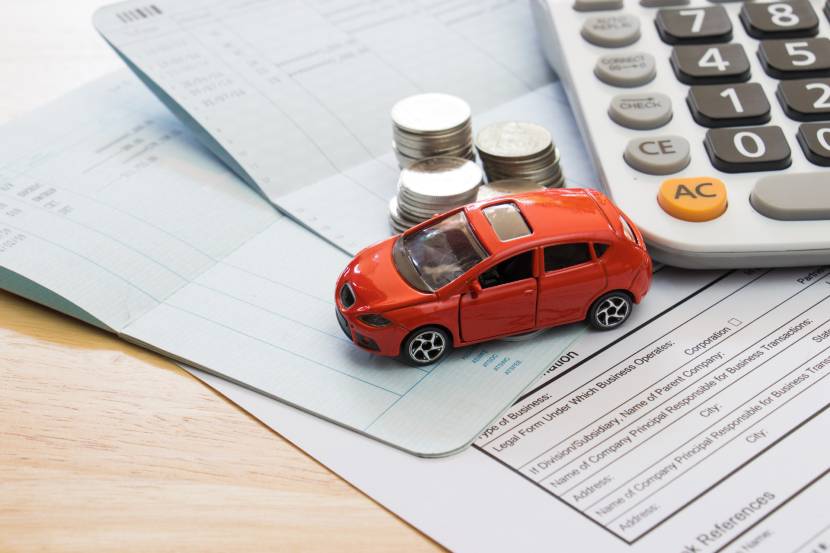Auto insurance, dear reader, is not just a bureaucratic necessity; it’s the magical shield that protects your vehicular chariot from the unpredictable chaos of the open road. Whether you’re a seasoned driver or a novice who still occasionally mistakes the gas pedal for the brake, understanding auto insurance is as crucial as knowing how to parallel park without invoking the wrath of surrounding vehicles.
- Full Coverage Car Insurance: What You Need to Know 2024
- The Ultimate Guide to Travel Insurance: A Journey of Safety and Savings 2024
- The Witty Guide to Insurance Quotes: Everything You Need to Know 2024
- The Ultimate Guide to Workers Compensation Insurance 2024: Protecting Your Workforce with a Smile
- All About Over 50 Life Insurance: Navigating the Golden Years
In this delightful dive into the realm of auto insurance, we’ll cover every nook and cranny, from the basic definitions to the nitty-gritty details, all while ensuring that you remain entertained. So, buckle up and prepare for an enlightening journey!
Table of Contents
What is Auto Insurance?
Auto insurance is a contract between you and an insurance company that provides financial protection against physical damage or bodily injury resulting from traffic collisions and against liability that could also arise from incidents in a vehicle.
For a detailed definition, check out this official resource from the Insurance Information Institute.

Why Do You Need Auto Insurance?
Let’s face it: driving without auto insurance is like going on a blind date without Google-stalking your date first. It’s risky, potentially disastrous, and, in many places, illegal. Here are some key reasons why auto insurance is non-negotiable:
- Legal Requirement: Most states mandate that drivers carry at least a minimum amount of liability insurance. Failure to comply can result in hefty fines, license suspension, or worse—endless lectures from your parents about responsibility.
- Financial Protection: In the event of an accident, auto insurance can save you from financial ruin. Repairing or replacing a vehicle, covering medical expenses, and dealing with legal fees can quickly add up.
- Peace of Mind: Knowing that you’re protected in the event of an accident can turn your daily commute from a stress-fest into a pleasant drive with your favorite podcast.
For more on why auto insurance is necessary, visit this comprehensive guide.
Types of Auto Insurance Coverage
Auto insurance isn’t a one-size-fits-all deal. It’s more like a buffet where you can pick and choose the coverages that best suit your needs and appetite. Here are the main types of coverage you should know about:
- Liability Coverage: This is the meat and potatoes of auto insurance. It covers damages you cause to other people or property. There are two types:
- Bodily Injury Liability (BIL): Covers medical expenses, lost wages, and legal fees if you’re at fault in an accident that injures someone else.
- Property Damage Liability (PDL): Covers repairs or replacement of other people’s property you damage in an accident.
- Collision Coverage: This coverage helps pay for repairs to your own vehicle after an accident, regardless of who’s at fault. It’s particularly handy for those who can’t afford to replace their car out-of-pocket.
- Comprehensive Coverage: Often called “comp” or “other than collision” coverage, this protects against damages not caused by a collision, such as theft, vandalism, natural disasters, and encounters with wildlife. Yes, that includes the unfortunate incident when a raccoon decided to turn your car’s engine bay into its new home.
- Personal Injury Protection (PIP): Also known as “no-fault insurance,” PIP covers medical expenses for you and your passengers, regardless of who’s at fault. In some states, it also covers lost wages and other related costs.
- Uninsured/Underinsured Motorist Coverage (UM/UIM): This coverage protects you if you’re involved in an accident with a driver who has no insurance or insufficient coverage. Given the surprising number of drivers who think insurance is optional, this coverage is highly recommended.
For a detailed breakdown of coverage types, see this informative page from the National Association of Insurance Commissioners (NAIC).
Factors Affecting Your Auto Insurance Premium
Ever wondered why your auto insurance premium feels as unpredictable as the weather? Several factors influence how much you pay for coverage:
- Driving Record: If your driving history is as spotless as a freshly cleaned windshield, congratulations—you’ll likely pay less. Accidents, speeding tickets, and DUIs can hike up your premium faster than you can say “defensive driving course.”
- Vehicle Make and Model: The type of car you drive significantly affects your premium. Sports cars, luxury vehicles, and cars with high theft rates typically cost more to insure. Meanwhile, family sedans and minivans are usually cheaper.
- Age and Gender: Statistically, younger drivers and male drivers are involved in more accidents, leading to higher premiums. So, if you’re a teenage boy driving a sports car, well, good luck with that.
- Location: Where you live matters. Urban areas with high traffic volumes and crime rates tend to have higher premiums than rural areas with less traffic and lower crime rates.
- Credit Score: Insurers often use credit scores to predict the likelihood of claims. A higher credit score can result in lower premiums, so keeping your credit healthy is beneficial.
- Coverage Limits and Deductibles: Choosing higher coverage limits increases your premium, but it also means better protection. Conversely, selecting a higher deductible lowers your premium but means you’ll pay more out-of-pocket in the event of a claim.
For a more detailed explanation, check out this resource from the Federal Trade Commission (FTC).

Tips for Lowering Your Auto Insurance Premium
Now that you know what affects your premium, let’s talk about how to reduce it. Here are some tips to help you save:
- Shop Around: Insurance companies offer different rates for similar coverage. Compare quotes from multiple insurers to find the best deal. Websites like Geico and Progressive make this process easier.
- Bundle Policies: Many insurers offer discounts if you bundle multiple policies, such as home and auto insurance. It’s like the insurance equivalent of a combo meal—more coverage for less money.
- Take Advantage of Discounts: Insurers offer various discounts, such as safe driver discounts, good student discounts, and discounts for installing anti-theft devices. Always ask your insurer about available discounts.
- Maintain a Good Credit Score: As mentioned earlier, a higher credit score can lower your premium. Pay your bills on time, reduce your debt, and monitor your credit report regularly.
- Increase Your Deductible: If you can afford a higher out-of-pocket expense in the event of a claim, raising your deductible can lower your premium.
- Drive Less: Some insurers offer discounts for low mileage. If you carpool, use public transportation, or work from home, you might qualify for these savings.
For more tips on saving money, visit this helpful guide from the Consumer Reports.
Common Auto Insurance Myths Debunked
Auto insurance is rife with myths and misconceptions. Let’s debunk a few of the most common ones:
- Red Cars Cost More to Insure: Contrary to popular belief, the color of your car has no impact on your insurance premium. Insurers care about the make, model, year, and engine size, not the paint job.
- Older Drivers Always Pay More: While it’s true that very young and very old drivers can face higher premiums, many older drivers benefit from lower rates thanks to their experience and safer driving habits.
- Your Personal Items are Covered: Auto insurance typically covers the vehicle itself, not personal items inside it. For instance, if your laptop is stolen from your car, it would be covered by your home or renters insurance, not your auto policy.
- Insurance Follows the Driver: In reality, insurance usually follows the car, not the driver. If someone borrows your car and gets into an accident, your insurance policy will likely cover the damages.
- Full Coverage Means Everything is Covered: “Full coverage” usually refers to having both collision and comprehensive coverage, but it doesn’t mean you’re covered for every possible scenario. Always read your policy carefully to understand what is and isn’t covered.
For more myth-busting facts, check out this article from the Insurance Information Institute.
Conclusion: Navigating the Auto Insurance Landscape
Understanding auto insurance might seem daunting at first, but with a little knowledge and a dash of humor, it becomes much more manageable. Remember, the key to finding the right coverage is to assess your needs, compare policies, and stay informed about your options.
And always, always, keep an eye out for those raccoons.
For more detailed information and to explore your options, visit Reel Rapture Realm’s auto insurance section and start your journey to smarter, safer driving today.


1 comment
[…] A Business Owner’s Policy (BOP) is a comprehensive package of insurance coverages tailored to meet the needs of small and medium-sized businesses. This guide provides an in-depth look at BOP insurance, covering its features, benefits, coverage options, and considerations, helping you make informed decisions about the right policy for your business needs. Unlocking the Mysteries of Auto Insurance: A Comprehensive and Entertaining Guide […]